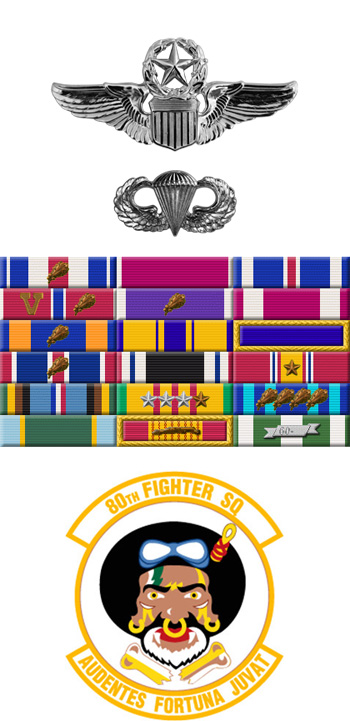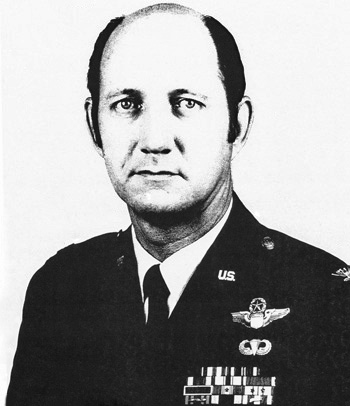
|
James Quincy Collins, Jr. |
 |
|||
| Rank, Service | ||||
Colonel O-6, U.S. Air Force |
||||
| Veteran of: | ||||
|
||||
| Tribute: | ||||
Quincy Collins was born on Independence Day, July 4, 1931, in Winnsboro, South Carolina, and was raised in Concord, North Carolina. He was commissioned a 2d Lt through the Air Force ROTC program at the Citadel in Charleston, South Carolina, on June 13, 1953, and went on active duty beginning July 11, 1953. Lt Collins completed pilot training and was awarded his pilot wings at Laredo AFB, Texas, in August 1954, and then completed F-86 Sabre training at Nellis AFB, Nevada, before serving with the 3595th Student Squadron at Nellis from December 1954 to February 1955. After completing an Academic Instructor Course at Maxwell AFB, Alabama, Lt Collins served as an instructor at the U.S. Air Force Academy from April 1955 to December 1957. His next assignment was as an F-86 and F-100 Super Sabre pilot with the 10th Fighter-Bomber Squadron of the 50th Fighter-Bomber Wing at Toul-Rosieres AB, France, from December 1957 to January 1959, followed by service as Aide to the Commander-in-Chief of U.S. Air Forces in Europe at Weisbaden, West Germany, from January to July 1959. Capt Collins served as Aide de Camp to the Commander of Tactical Air Command at Langley AFB, Virginia, from August 1959 to September 1961, and then attended Air Command & Staff College at Maxwell AFB from September 1961 to July 1962. He next flew F-104 Starfighters with the 436th Tactical Fighter Squadron of the 479th Tactical Fighter Wing at George AFB, California, from July 1962 to February 1964, followed by service flying F-105 Thunderchiefs with the 80th Tactical Fighter Squadron of the 8th Tactical Fighter Wing at Itazuke AB, Japan, from February 1964 to March 1965. Capt Collins served as Air Operations Officer for the 6441st Tactical Fighter Wing at Yokota AB, Japan, from April 1965 until he was forced to eject over North Vietnam while on TDY with the 36th Tactical Fighter Squadron at Takhli Royal Thai AFB, Thailand, on September 2, 1965. He was immediately captured and held as a Prisoner of War for the next 2,721 days. Col Collins was released during Operation Homecoming on February 12, 1973, and was briefly hospitalized to recover from his injuries at Maxwell AFB. His final assignment was as Assistant Executive Officer and Special Assistant to the Commander of the Eastern Air Force Reserve Region with the 2200th Support Squadron at Dobbins AFB, Georgia, from October 1973 until his retirement from the Air Force on May 1, 1974. |
||||
|
||||

